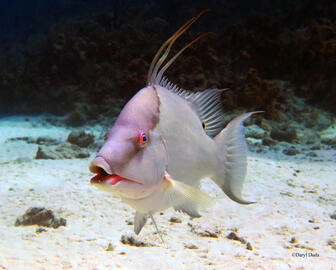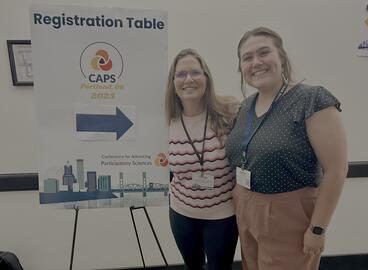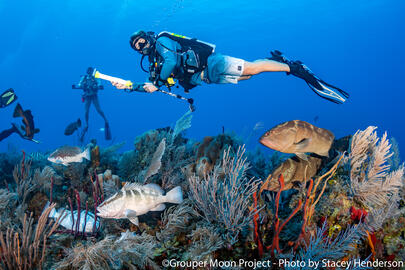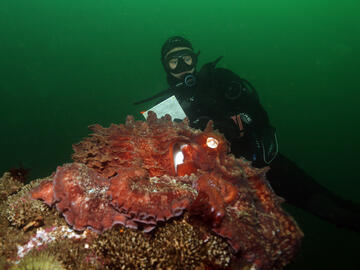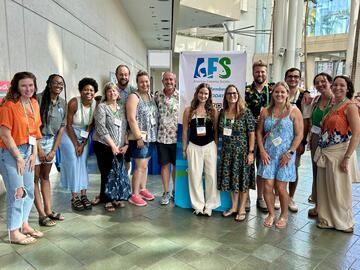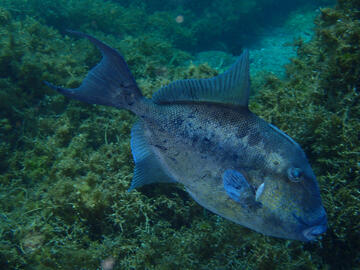Last month, long-time REEF scientific advisor and Professor at Scripps Institution of Oceanography, Dr. Brice Semmens, participated in an important fisheries science meeting in Florida to help shape how Hogfish populations are assessed and managed in the Southeast U.S. This meeting was part of the SEDAR (Southeast Data, Assessment, and Review) process, a formal scientific review used by government agencies to assess the health of fish populations and set sustainable catch limits.
Last week, REEF Co-Executive Director Dr. Christy Pattengill-Semmens joined hundreds of experts, educators, and community leaders in Oregon for the 2025 Conference for Advancing the Participatory Sciences. This annual event brings together people from around the world who are passionate about involving the public in scientific research.
The REEF Volunteer Fish Survey Project is widely regarded as one of the most impactful ocean citizen science programs. Since 1993, almost 18,000 REEF volunteers have generated one of the largest marine life databases in the world. What makes it such a success? Since the beginning, the data have been made available to everyone. Anyone can query the database and generate summary reports on the REEF website.
This year's Grouper Moon Project field season contained some unexpected surprises and raised a few questions, including "where are the fish?" Nassau Grouper normally spawn around the first winter full moon, when water temperatures drop. This is typically in late January or early February, but when the full moon falls in the middle of the months, this creates a “split moon” effect, where spawning often occurs in both months.
The Grouper Moon Project is a conservation science partnership between REEF and the Cayman Islands Department of Environment (DoE), with scientists from Scripps Institution of Oceanography at UC San Diego and Oregon State University. The project is aimed at studying Nassau Grouper, Epinephelus striatus, a keystone species on Caribbean coral reefs. Since 2002, our team has studied the Nassau Grouper spawning aggregations in the Cayman Islands, which hosts some of the largest and last known gatherings of this endangered fish.
Did you know that the REEF Volunteer Fish Survey Project (VFSP) has generated one of the largest marine life sightings databases? This citizen science effort engages scuba divers and snorkelers to collect data on fishes and select invertebrates and algae. What began as a small effort in the Florida Keys in 1993 has since grown into a project with a global reach, inluding almost 18,000 volunteers. In 2024, the 300,000th survey was submitted to the REEF database, which now contains over 14 million sightings records. What happens to all this data?
REEF staff and collaborators attended the 154th annual American Fisheries Society (AFS) Conference last month, held in Honolulu, Hawaii. REEF's marine life database is a valuable tool for conservation science and research on a global scale, and we were proud to represent our work at this notable conference. Nine sessions at AFS featured REEF data and/or programs.
Did you know that REEF is part of an international effort to determine how to best use large fish biodiversity datasets? REEF Co-Executive Director of Science & Engagement Dr. Christy Semmens is part of a working group called "CoNCENSUS: Advancing standardisation of COastal and Nearshore demersal fish visual CENSUS techniques", led by Anthony Bernard from the South African Institute for Aquatic Biodiversity and Rick Stuart-Smith from Reef Life Survey. Christy will attend the upcoming CoNCENSUS working group meeting in South Africa this October.
Tropical regions are, in general, more diverse than ecosystems at higher temperate latitudes. A commonly held hypothesis is that the diverse predators in tropical regions cause predation to have a relatively stronger role in shaping communities. Data from the REEF Volunteer Fish Survey Project (VFSP) were used by Michele Repetto and colleagues from the Smithsonian Tropical Research Institute to test for underlying differences in regional fish diversity that could contribute to variation in predation intensity and impact.
Biogeographic and Seasonal Differences in Consumer Pressure Underlie Strong Predation in the Tropics
Tropical regions are, in general, more diverse than ecosystems at higher temperate latitudes. A commonly held hypothesis is that the diverse predators in tropical regions cause predation to have a relatively stronger role in shaping communities. Data from the REEF Volunteer Fish Survey Project (VFSP) were used by Michele Repetto and colleagues from the Smithsonian Tropical Research Institute to test for underlying differences in regional fish diversity that could contribute to variation in predation intensity and impact.

